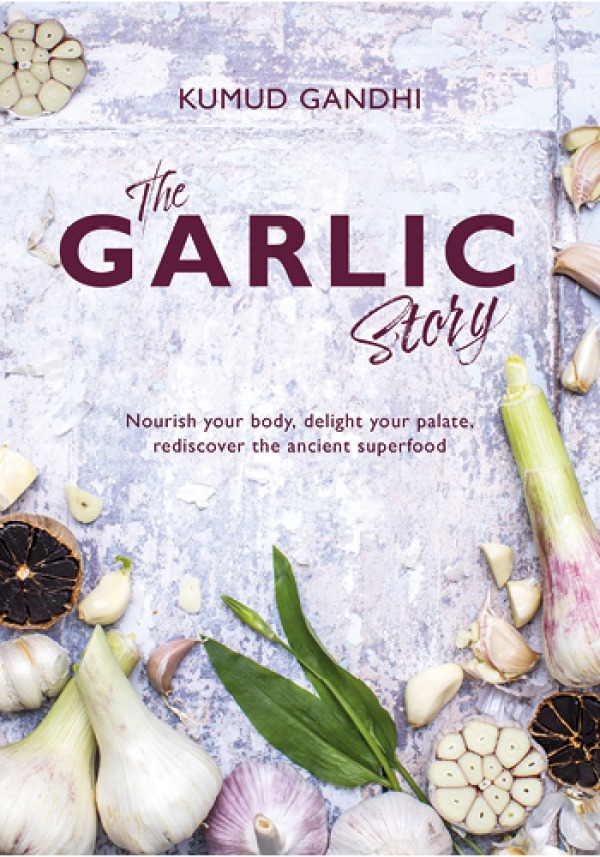
The Garlic Story
by Kumud Ghandi,
£20
mezepublishing.co.uk
Join Our World... Sign up for our exclusive newsletter

Be inspired every day with Living North


Wild garlic, also known as ramsons, is a perennial plant that can be found in the UK from late March to June when it grows in abundance in damp shady deciduous woods, creating a beautiful carpet of lush green leaves with white star-like flowers. The leaves are long, pointed oval shapes with untoothed edges. They grow from the base of the plant and have an unmistakeable garlicky scent.
Foraging for wild garlic leaves is hugely enjoyable; that first foray into the woodland after a typical British winter is joyful, a sign that spring is finally here and there is much to look forward to. Then there is the anticipation that you’ll find an early crop of fresh vibrant green leaves to make something delicious with, to please the palate like nothing else. For me, the first recipe I make with wild garlic has to be a jar of deep emerald-green pesto, a jewel to adorn my pasta or sourdough.
Wild garlic is a delicious and versatile ingredient that is easily recognised by its distinctive garlic-like aroma. Early in the season, the fragrance may not be so pungent but if you think the plant looks right, just rub the leaf between your fingers and you’ll soon notice the familiar scent. When identifying wild garlic, look out for its broad, glossy, slightly curved leaves. The small, star-shaped white flowers are also a good indicator, although they bloom later in the season so if you’re an early bird you may only find the leaves. When picking wild garlic, use scissors or a sharp knife to cut the leaves just above the ground. Never harvest the bulbs; leave them intact in the ground so that the plant can continue to grow the following year.
If you’re interested in foraging for wild garlic, the best place to start is in ancient woodlands, along riverbanks, and in damp clearings. Wild garlic can also be found in hedgerows and along the edges of fields. When you’re out foraging, be sure to always follow the countryside code so that you forage without causing any damage to the natural environment, and only pick what you need. That way, you’ll have another reason to go back and benefit from the freshness of the leaves every time!

Flowers: small and white, with six petals on a thin stalk. Around 25 flowers form each rounded flower cluster which is held high on a single, leafless stalk.
Fruit/seeds: wild garlic reproduces through bulbs, bulbils and very occasionally seeds. The seeds are 2–3mm long, black and flattish on one side. They are dispersed when the parts of the plant above ground die down.
Not to be confused with lily-of-the-valley when not in flower, though the leaves of wild garlic grow from the plant base whereas lily-of-the-valley has two or three leaves on its stem. When in flower, lily-of-the-valley is easily distinguishable from wild garlic as it has bell-shaped, white flowers. Lily-of-the-valley is poisonous so be sure to fully identify wild garlic before foraging.
Wild garlic leaves have a lighter flavour profile than that of garlic bulbs so if you enjoy the more subtle form of garlic, you’re in for a treat. The leaves and flowers are both edible and can be eaten raw in salad, blanched and used in place of spinach, or made into amazing soups and pesto.

by Kumud Ghandi,
£20
mezepublishing.co.uk